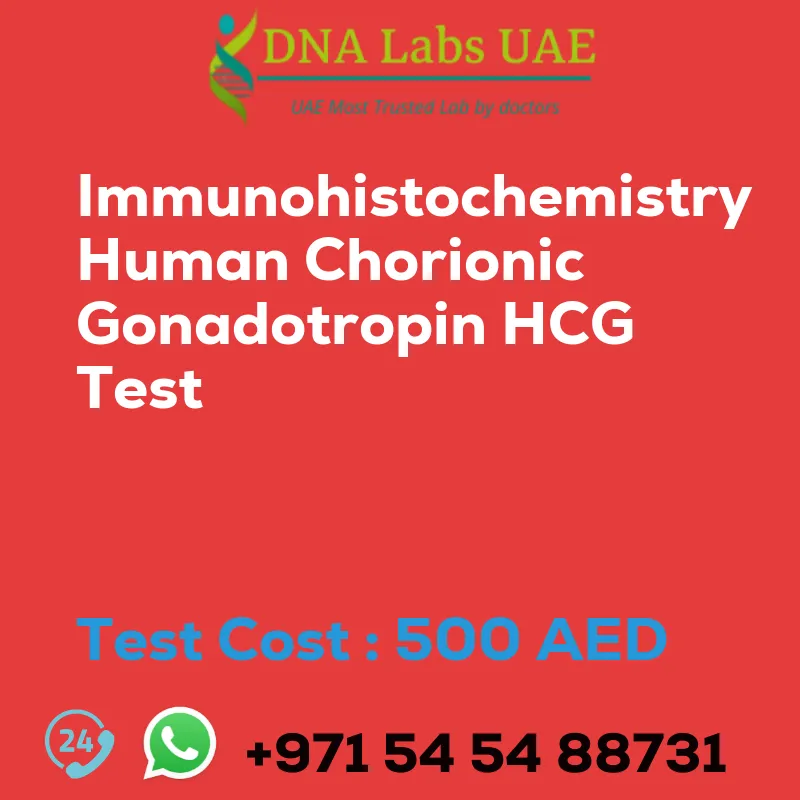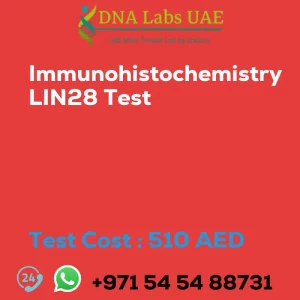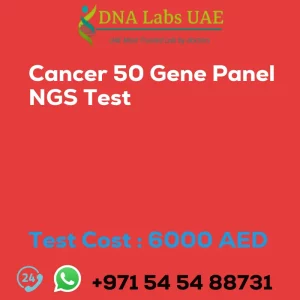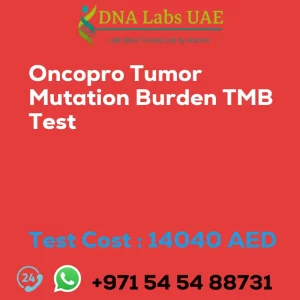IMMUNOHISTOCHEMISTRY HUMAN CHORIONIC GONADOTROPIN HCG Test
Cost: AED 500.0
Symptoms, Diagnosis, and Test Details
The IMMUNOHISTOCHEMISTRY HUMAN CHORIONIC GONADOTROPIN HCG Test is a diagnostic test used to detect the presence of HCG in tissue samples. HCG is a hormone produced by the placenta during pregnancy and is also associated with certain types of cancer, such as testicular and ovarian cancer.
To perform the HCG test, tumor tissue should be submitted in 10% Formal-saline or Formalin fixed paraffin embedded block. The sample should be shipped at room temperature. It is important to provide a copy of the Histopathology report, site of biopsy, and clinical history for accurate diagnosis.
Report Delivery
Sample: Daily by 6 pm
Report Block: 5 days
Tissue Biopsy: 5 days
Tissue large complex: 7 days
Method and Test Type
The IMMUNOHISTOCHEMISTRY HUMAN CHORIONIC GONADOTROPIN HCG Test is performed using the immunohistochemistry (IHC) technique. IHC is a technique used to detect specific proteins in tissue samples using antibodies. In this test, specific antibodies are used to detect the presence of HCG in tissue samples.
The test is classified as a cancer test and is typically performed by an Oncologist or Pathologist in the Test Department.
Pre Test Information
Before conducting the test, it is necessary to provide a copy of the Histopathology report, site of biopsy, and clinical history for accurate diagnosis.
Test Procedure
The HCG test involves several steps:
- Tissue samples are fixed and embedded in paraffin wax.
- Thin sections of the tissue are cut and placed on glass slides.
- The tissue sections are deparaffinized and rehydrated.
- An antigen retrieval solution is used to unmask the HCG antigen.
- The tissue sections are blocked to prevent non-specific binding of the antibody.
- The tissue sections are incubated with a primary antibody that specifically binds to HCG.
- After incubation, the tissue sections are washed to remove any unbound antibody.
- A secondary antibody, linked to an enzyme or a fluorescent dye, is added to the tissue sections.
- The secondary antibody binds to the primary antibody and allows for the visualization of HCG.
- The tissue sections are washed again to remove any unbound secondary antibody.
- The enzyme-linked secondary antibody is visualized using a chromogenic substrate, which produces a colored reaction product at the site of HCG antigen.
- The fluorescent dye-linked secondary antibody is visualized using a fluorescence microscope.
Diagnosis and Conclusion
The presence of HCG in the tissue sample can be determined by observing the presence of the colored reaction product or the fluorescence signal. This information can be used to diagnose pregnancy or to determine the presence of HCG in cancerous tissue.
In summary, the IMMUNOHISTOCHEMISTRY HUMAN CHORIONIC GONADOTROPIN HCG Test is a diagnostic test used to detect the presence of HCG in tissue samples. It involves the use of specific antibodies that bind to HCG and the visualization of the antibody-antigen complex using either an enzyme-linked reaction or fluorescence microscopy.
| Test Name | IMMUNOHISTOCHEMISTRY HUMAN CHORIONIC GONADOTROPIN HCG Test |
|---|---|
| Components | |
| Price | 500.0 AED |
| Sample Condition | Submit tumor tissue in 10% Formal-saline OR Formalin fixed paraffin embedded block. Ship at room temperature. Provide a copy of the Histopathology report, Site of biopsy and Clinical history. |
| Report Delivery | Sample Daily by 6 pm; Report Block: 5 days Tissue Biopsy: 5 days Tissue large complex : 7 days |
| Method | Immunohistochemistry |
| Test type | Cancer |
| Doctor | Oncologist, Pathologist |
| Test Department: | |
| Pre Test Information | Provide a copy of the Histopathology report, Site of biopsy and Clinical history. |
| Test Details |
Immunohistochemistry (IHC) is a technique used to detect specific proteins in tissue samples using antibodies. The human chorionic gonadotropin (HCG) test is an example of an IHC test that is used to detect the presence of HCG in tissue samples. HCG is a hormone that is produced by the placenta during pregnancy. It is commonly used as a marker for pregnancy and is also associated with certain types of cancer, such as testicular and ovarian cancer. The HCG test can be performed on tissue samples from these types of cancers to determine if HCG is present. To perform the HCG test, tissue samples are first fixed and embedded in paraffin wax. Thin sections of the tissue are then cut and placed on glass slides. The tissue sections are then deparaffinized and rehydrated. Next, the tissue sections are treated with an antigen retrieval solution to unmask the HCG antigen. This is followed by blocking the tissue sections to prevent non-specific binding of the antibody. The tissue sections are then incubated with a primary antibody that specifically binds to HCG. After incubation with the primary antibody, the tissue sections are washed to remove any unbound antibody. A secondary antibody, which is linked to an enzyme or a fluorescent dye, is then added to the tissue sections. This secondary antibody binds to the primary antibody and allows for the visualization of HCG. Finally, the tissue sections are washed again to remove any unbound secondary antibody. The enzyme-linked secondary antibody is visualized using a chromogenic substrate, which produces a colored reaction product at the site of HCG antigen. The fluorescent dye-linked secondary antibody is visualized using a fluorescence microscope. The presence of HCG in the tissue sample can be determined by observing the presence of the colored reaction product or the fluorescence signal. This information can be used to diagnose pregnancy or to determine the presence of HCG in cancerous tissue. In summary, the immunohistochemistry HCG test is a technique used to detect the presence of HCG in tissue samples. It involves the use of specific antibodies that bind to HCG and the visualization of the antibody-antigen complex using either an enzyme-linked reaction or fluorescence microscopy. |








